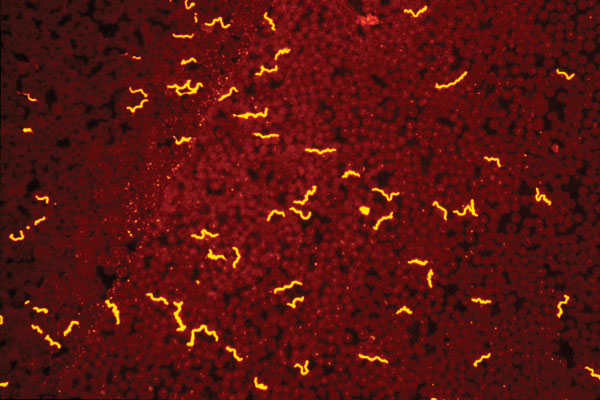Volume 8, Number 2—February 2002
Perspective
Vector Interactions and Molecular Adaptations of Lyme Disease and Relapsing Fever Spirochetes Associated with Transmission by Ticks
Figure 2

Figure 2. Borrelia hermsii visualized with an immunofluorescent stain in a thin blood smear of an experimentally infected mouse. Such recurrent, high densities of spirochetes circulating in the peripheral blood of small mammals allows for the acquisition of these bacteria by fast-feeding ticks that ingest a small volume of blood.
Page created: July 14, 2010
Page updated: July 14, 2010
Page reviewed: July 14, 2010
The conclusions, findings, and opinions expressed by authors contributing to this journal do not necessarily reflect the official position of the U.S. Department of Health and Human Services, the Public Health Service, the Centers for Disease Control and Prevention, or the authors' affiliated institutions. Use of trade names is for identification only and does not imply endorsement by any of the groups named above.